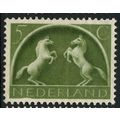Animal - Bear - Alaskan Brown BEAR fishing for salmon postcard
- Condition : Used
- Dispatch : 2 Days
- Brand : None
- ID# : 36078899
- Quantity : 1 item
- Views : 421
- Location : United Kingdom

- Seller : justthebook (+1704)
- Barcode : None
- Start : Sun 12 Dec 2010 01:40:38 (BST)
- Close : Run Until Sold
- Remain : Run Until Sold
More Listings from This Seller view all
Seller's Description
- Postcard
- Picture / Image: Alaskan Brown Bear Fishing for Red Salmon Photo: Harry M. Walker
- Publisher: Arctic Circle Enterprises, Anchorage, Alaska
- Postally used: no
- Stamp: n/a
- Postmark(s): n/a
- Sent to: n/a
- Notes & Key words:
------------------------------------------------
Postage & Packing:
UK (incl. IOM, CI & BFPO): 99p
Europe: £1.60
Rest of world (inc. USA etc): £2.75
No additional charges for more than one postcard. You can buy as many postcards from me as you like and you will just pay the fee above once. (If buying postcards with other things such as books, please contact or wait for invoice before paying).
Payment Methods:
UK - PayPal, Cheque (from UK bank) or postal order
Outside UK: PayPal or Google Checkout ONLY please. NO non-UK currency checks or money orders (sorry).
NOTE: All postcards are sent in brand new stiffened envelopes which I have bought for the task. These are specially made to protect postcards and you may be able to re-use them. In addition there are other costs to sending so the above charge is not just for the stamp!
----------------------------------------------
Text from the free encyclopedia WIKIPEDIA may appear below to give a little background information:
*************
The Kodiak bear (Ursus arctos middendorffi), also known as the Alaskan brown bear,[2] is the largest subspecies of Brown Bear and occupies the islands of the Kodiak Archipelago in south-central Alaska. Its traditional name in the Alutiiq language is: Taquka-aq.[3]
Taxonomist C.H. Merriam was the first to recognize Kodiak bears as unique and he named the species in honor of the celebrated Russian naturalist Dr. A. Th. von Middendorff.[4] Subsequent taxonomic revisions merged most North American brown bears into a single subspecies (Ursus arctos horribilis), but Kodiak bears are still considered to be a unique subspecies (Ursus arctos middendorffi). Recent investigations of genetic samples from bears on Kodiak have shown that they are closely related to brown bears on the Alaska Peninsula and Kamchatka, Russia. It appears that Kodiak bears have been genetically isolated since at least the last ice age (10,000 to 12,000 years ago) and there is very little genetic diversity within the population.[5] Although the current population is healthy and productive, and has shown no overt adverse signs of inbreeding, it may be more susceptible to new diseases or parasites than other more diverse brown bear populations.
Few Kodiak bears have been weighed in the wild, so all weights are estimates. Size range for females is from 500 to 700 pounds and for males 800 to 1,400 pounds.[6] Mature males (larger than sub-prime males) average 477–534 kg (1,051–1,177 lb) over the course of the year,[7] and can weigh up to 1,500 lbs at peak times.[3]Females are typically about 20% smaller and 30% lighter than males[3] and adult sizes are attained when bears are 6 years old. Bears weigh the least when they emerge from their dens in the spring, and can increase their weight by 20–30%[6] during late summer and fall. Bears in captivity can sometimes attain weights that are double those seen in wild bears.[citation needed] Kodiak brown bear "Barbucha" at the zoo in Duisburg weighs 1,000-kilogram (2,200 lb).[8]
An adult male Kodiak bear stands 3.5–4.5 ft (exceptionally up to 5 feet–1.52 m[3]) tall at the shoulder when it is standing on all four legs. When standing fully upright on its hind legs, a large male could reach a height of 10 feet (3 m).[3] When hunters refer to a 10-foot (3.0 m) bear, they are estimating the size of the skinned-out hide by adding the length (nose to base of tail) and the width (tip of left center front claw to tip of right center front claw) and dividing that sum by two. This measurement is extremely variable due to hide shrinkage or stretching, rendering it impossible to use as a reliable way to compare bears.
The standard method of evaluating the size of bears is by measuring their skulls. Most North American hunting organizations and management agencies use calipers to measure the length of the skull (back of sagittal crest on the back of the skull to the front tooth) and the width (maximum width between the zygomatic arches — “cheek bones”). The total skull size is the sum of these two measurements. The largest bear ever killed in North America was from Kodiak Island with a total skull size of 30.75 in (78.1 cm), and 8 of the top 10 brown bears listed in the Boone and Crockett record book are from Kodiak.[9] The average skull size of Kodiak bears that were killed by hunters in the first five years of the twenty-first century was 25.1 in (63.8 cm) for boars and 21.8 in (55.4 cm) for sows.[10]
Listing Information
| Listing Type | Gallery Listing |
| Listing ID# | 36078899 |
| Start Time | Sun 12 Dec 2010 01:40:38 (BST) |
| Close Time | Run Until Sold |
| Starting Bid | Fixed Price (no bidding) |
| Item Condition | Used |
| Bids | 0 |
| Views | 421 |
| Dispatch Time | 2 Days |
| Quantity | 1 |
| Location | United Kingdom |
| Auto Extend | No |


 for 1 item(s)
for 1 item(s)















